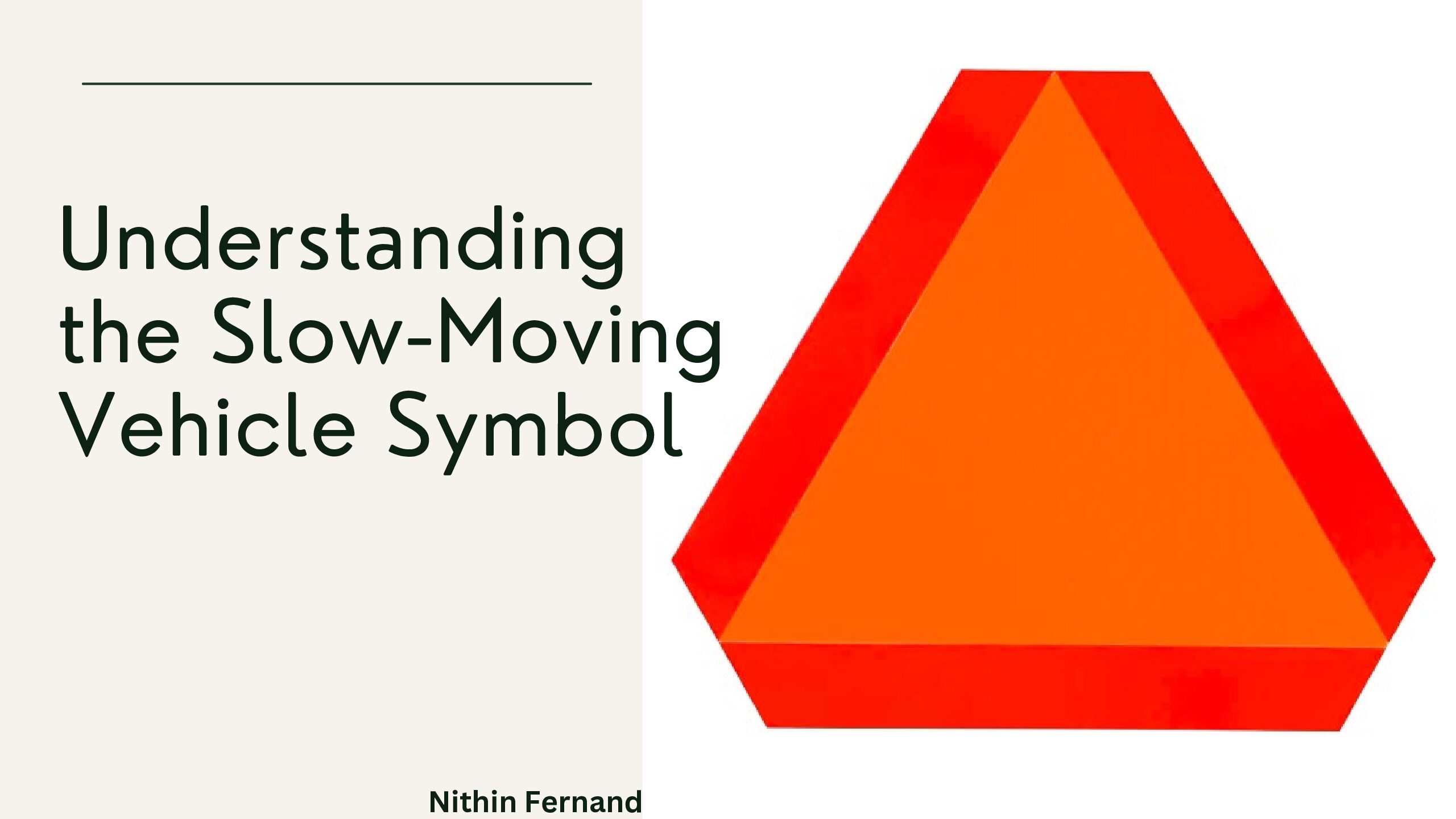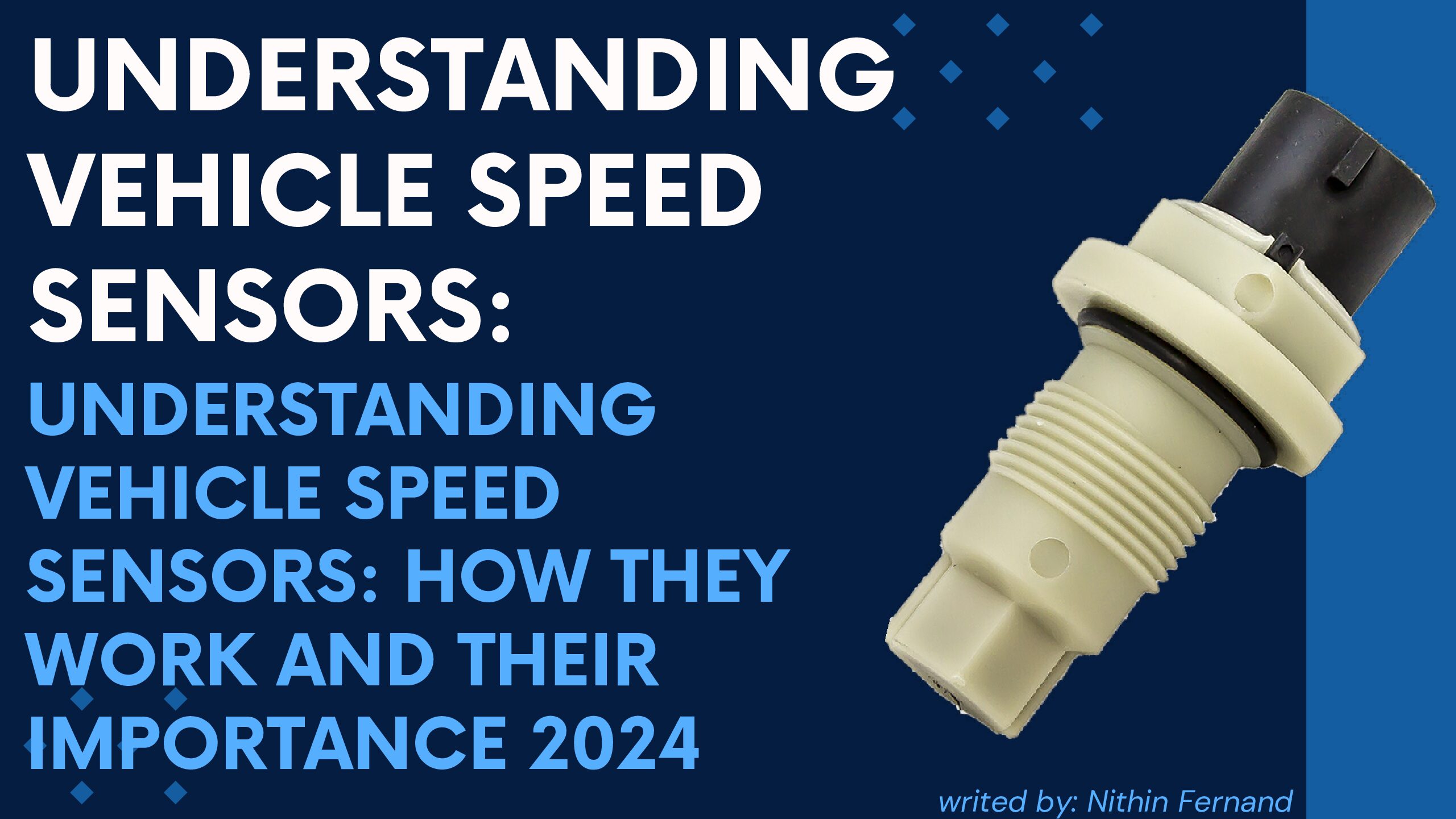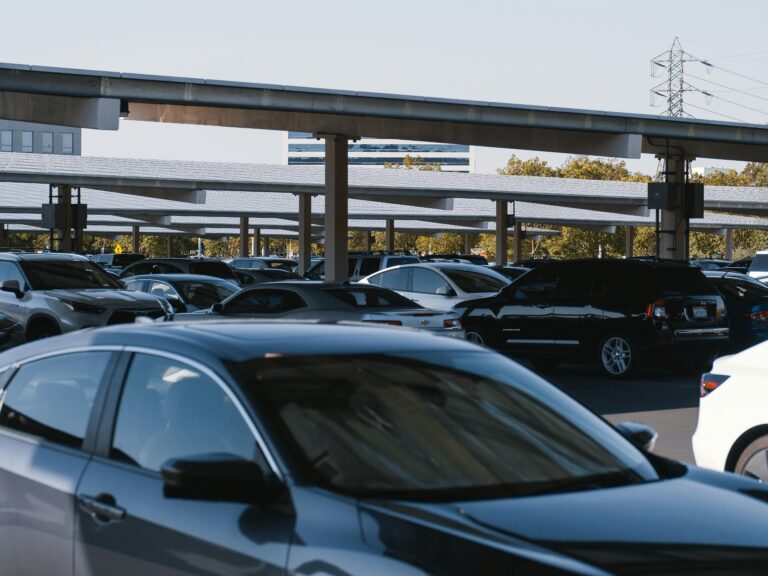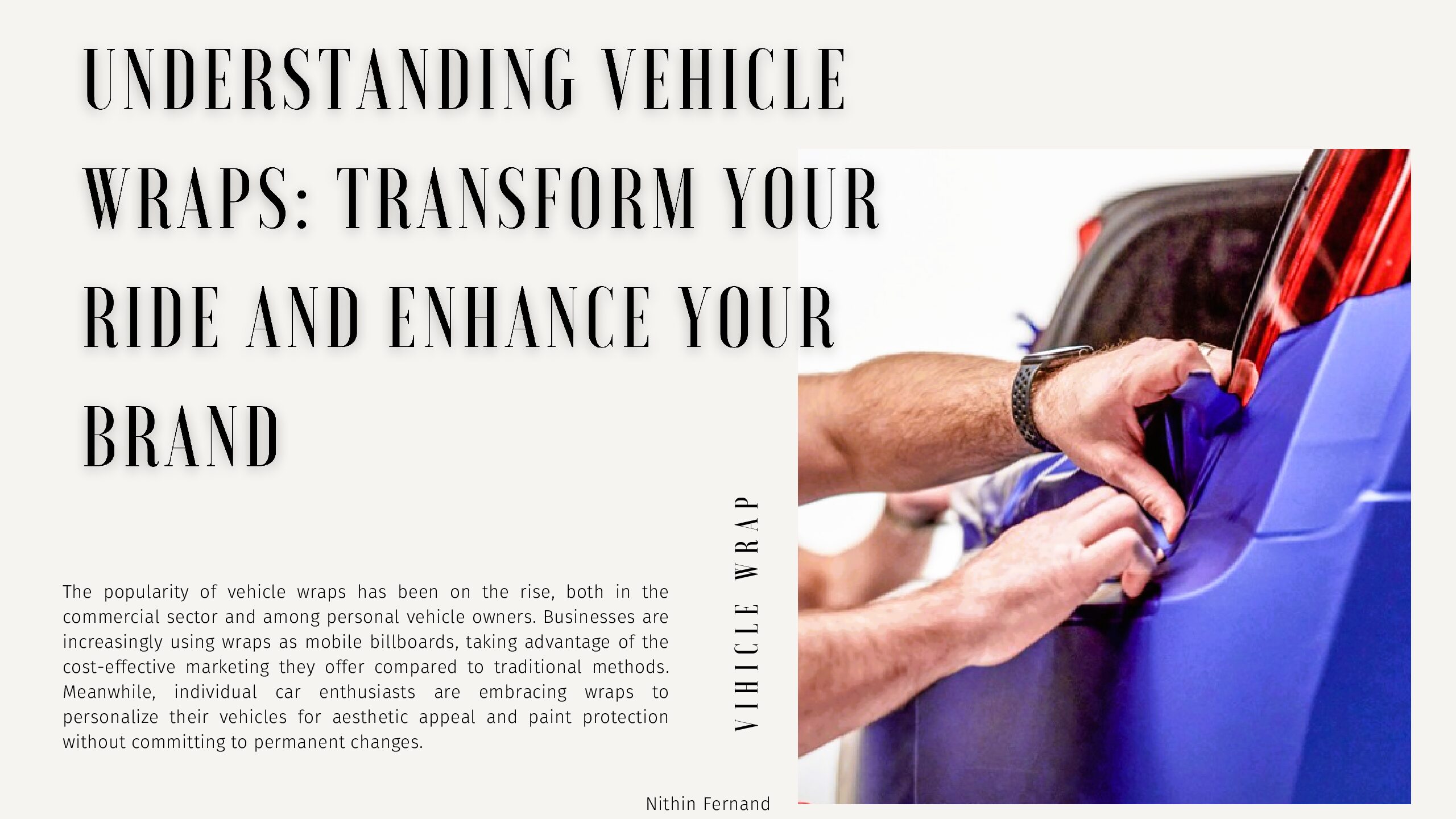Understanding the Slow-Moving Vehicle Symbol: Importance, Regulations, and Best Practices 2024
The slow-moving vehicle (SMV) symbol is a widely recognized emblem used to indicate vehicles that travel at speeds of 25 miles per hour or less. Typically featuring a bright orange triangle bordered by a reflective red outline, the SMV symbol serves as a crucial visual cue for drivers, alerting them to the presence of slower vehicles on the road.
The importance of the SMV symbol in road safety cannot be overstated. It plays a vital role in promoting awareness and reducing the risk of accidents involving slow-moving vehicles—such as farm equipment, construction machinery, and certain recreational vehicles—by informing faster-moving traffic of their presence. Understanding the regulations surrounding the SMV symbol, as well as best practices for its use, is essential for both operators of slow-moving vehicles and other road users.

The purpose of this article is to provide a comprehensive understanding of the SMV symbol, including its significance in enhancing road safety, relevant regulations pertaining to its use, and best practices for drivers to ensure safe interactions on the roads. By educating both SMV operators and other drivers, we can foster a safer road environment for everyone.
Table of Contents
History and Development of the SMV Symbol
Origin and Introduction of the SMV Symbol
The (SMV) was first developed in response to the need for increased safety on roads shared by both fast-moving and slow-moving vehicles, particularly in rural areas. In 1965, the American Society of Agricultural Engineers (ASAE) created the SMV emblem as a means to better identify agricultural vehicles and equipment traveling on public roadways. The bright orange and reflective triangle design was chosen for its visibility, ensuring that approaching drivers could easily recognize slow-moving vehicles from a distance.
The original concept aimed to reduce accidents involving farm machinery, which often operates at speeds of 25 miles per hour or less. The implementation of the SMV symbol quickly gained traction, becoming a standard in many states across the U.S. to enhance driver awareness and promote road safety.
Changes and Adaptations Over Time to the Design and Regulations
While the SMV symbol has maintained its basic design since its introduction, there have been various adaptations in terms of regulations and usage guidelines. As road safety awareness has evolved, so too have the standards concerning the symbol’s visibility and placement on vehicles.
- Reflection and Visibility Enhancements: Over the years, improvements in materials have led to the use of more reflective coatings, enhancing the symbol’s visibility during both daytime and nighttime conditions.
- Standardization of Size and Use: Several states have adopted specific regulations outlining the minimum sizes for the SMV symbol, ensuring uniform visibility across the board. For example, many jurisdictions require that the symbol be at least 14 inches wide and tall to be effective.
- Incorporation of Technology: In more recent times, there have been discussions around integrating technology with the SMV symbol, such as utilizing lights or digital displays to enhance visibility further.
Overview of the Agencies Involved in the Symbol’s Adoption and Regulation
The adoption and regulation of the SMV symbol involve several key agencies and organizations:
- American Society of Agricultural Engineers (ASAE): As the original developer of the SMV symbol, this organization established the symbol’s design and parameters. Their guidelines formed the basis for regulations adopted by various states.
- Federal Highway Administration (FHWA): This agency plays a significant role in setting national standards for traffic control devices, including the SMV symbol. The FHWA provides guidelines and supports state compliance to ensure safety on federal roads.
- State Departments of Transportation (DOT): Individual states have the authority to regulate the use of the SMV symbol based on their specific road conditions and safety needs. Each state may have variations in the enforcement of SMV symbol requirements, reflecting local agricultural practices and traffic patterns.
- Farm Bureau and Agricultural Safety Organizations: Various agricultural advocacy groups support the safe use of the SMV symbol, promoting awareness among farmers and rural drivers. These organizations help educate the public on proper SMV usage and advocate for policies that enhance road safety for slow-moving vehicles.
Design and Specifications of the SMV Symbol
Description of the SMV Symbol’s Appearance: Shape, Color, and Size
The Slow-Moving Vehicle (SMV) symbol is characterized by its distinctive triangular shape, which is easily recognizable. Here are the key elements of its design:
- Shape: The SMV symbol is a right-angled triangle pointing upward, with its base at the bottom. The triangle design is effective in drawing attention and is commonly understood as a cautionary symbol.
- Color: The symbol consists of a bright orange background, which is highly visible against various environmental conditions. The inner area of the triangle features a black reflective border, enhancing visibility, especially during low-light situations or adverse weather.
- Size: The standard size for the SMV symbol is 14 inches wide and 12 inches high, although larger versions may also be utilized for added visibility. Many regulations suggest that the symbol should be clearly visible from a distance of at least 500 feet under normal viewing conditions.
Materials Used for Manufacturing the Symbol and Why They Are Chosen

The materials used in the manufacturing of the SMV symbol are selected for durability, visibility, and safety. Here are the common materials:
- Reflective Sheeting: Most SMV symbols utilize high-intensity reflective sheeting, often made from polymer or vinyl. This reflective material is crucial for ensuring that the symbol can be seen at night or in low visibility conditions, as it reflects headlights from oncoming vehicles back to drivers.
- Weather-Resistant Coatings: Symbols are typically coated or treated to withstand the elements, including rain, UV radiation, and snow. This weather resistance helps maintain the symbol’s visibility and integrity over time, ensuring it does not fade or deteriorate quickly.
- Base Materials: Common substrates for the SMV symbol include aluminum or heavy-duty plastic, which provides a lightweight yet durable option that can endure outdoor conditions without warping or rusting.
These material choices ensure that the SMV symbol is not only effective in conveying its message but also long-lasting and reliable in various environmental conditions.
Placement Guidelines on Vehicles for Maximum Visibility
Proper placement of the SMV symbol is essential for its effectiveness. Here are the key guidelines:
- Height and Location: The SMV symbol should be positioned at the rear of the slow-moving vehicle. It is typically mounted about 2 to 6 feet above the ground to ensure visibility by approaching drivers. It should be at a height that enables drivers to see the symbol without obstruction.
- Clear of Obstructions: The symbol should be free from any obstructions such as trailers, load, or other equipment that might hinder visibility. Ensuring that the SMV symbol is unobstructed is crucial for alerting other drivers as early as possible.
- Orientation: The SMV symbol must be mounted so that the triangular shape remains upright. It should point upwards at all times to maintain recognition and compliance with safety regulations.
- Multiple Symbols: For larger vehicles or those that may be approached from different directions, additional SMV symbols may be placed on the sides of the vehicle to increase visibility.
By adhering to these design specifications and placement guidelines, the SMV symbol effectively communicates the presence of slow-moving vehicles on the road, thereby enhancing safety for all road users.
Legal Requirements and Regulations
Overview of Who Must Use the SMV Symbol (Types of Vehicles)
The SMV symbol is primarily mandated for use on certain types of vehicles that are commonly identified as slow-moving, particularly those that travel at speeds of 25 miles per hour or less. The following categories of vehicles are required to display the SMV symbol:
- Agricultural Equipment: This includes tractors, combines, harvesters, and other farming machinery that frequently operate on public roads.
- Construction Vehicles: Slow-moving construction vehicles such as bulldozers, graders, and excavators that may be transporting materials or traversing roads at reduced speeds.
- Utility Vehicles: Certain utility vehicles, including those used for maintenance and repair in rural or semi-rural areas, are required to display the SMV symbol when operating on roadways.
- Specialty Vehicles: This category may encompass vehicles used for recreational purposes, such as golf carts or ATVs, particularly when being driven legally on public roads.
Specific regulations may vary by state, but generally, any vehicle classified as slow-moving that operates on public roads must display the SMV emblem.
Federal, State, and Local Regulations Regarding the SMV Symbol
The legal requirements for using the SMV symbol are governed by a combination of federal, state, and local regulations:
- Federal Regulations: The Federal Highway Administration (FHWA) sets guidelines for traffic control devices, including the SMV symbol. These guidelines help ensure consistency in the design and use of transportation signage across the U.S., but the specific enforcement is primarily handled at state and local levels.
- State Regulations: Each state has its laws and regulations concerning the mandatory use of the SMV symbol. Some states may require that all slow-moving vehicles display the symbol, while others may have specific exemptions or additional requirements. For instance, some states provide standards for symbol placement, size, and conditions under which the symbol must be displayed.
- Local Ordinances: In addition to state laws, local jurisdictions may implement their own regulations regarding the SMV symbol. These can include specific road usage laws, variations in symbol design, or locality-based requirements based on road conditions.
It is essential for vehicle operators to familiarize themselves with the specific laws applicable in their state and locality to ensure compliance.
Penalties or Consequences for Non-Compliance
Failure to display the SMV symbol when required can result in several penalties or consequences, which may include:
- Traffic Citations: Drivers who violate SMV requirements can be pulled over and cited by law enforcement. Fines may vary by state and can increase with repeated offenses.
- Civil Liability: In the event of an accident, the absence of the SMV symbol on a required vehicle may be considered negligence, potentially leading to liability for damages caused in an accident involving a slow-moving vehicle.
- Increased Insurance Costs: Non-compliance with regulations may lead to higher insurance premiums or denial of coverage in case of an accident, particularly if the absence of the SMV symbol is linked to a road incident.
- Vehicle Impoundment: In severe cases, repeat offenders may have their vehicle impounded until appropriate compliance with symbol regulations is achieved.
Ensuring compliance with the display of the SMV symbol is not only required by law but is critical for enhancing road safety and minimizing the risk of accidents involving slow moving vehicles. By adhering to these legal requirements, vehicle operators contribute to a safer driving environment for themselves and other road users.
Tips for Other Road Users on Safely Interacting with Slow-Moving
How the SMV Symbol Enhances Road Safety for Both Slow-Moving Vehicles and Other Road Users

The Slow-Moving Vehicle (SMV) symbol plays a critical role in enhancing road safety by providing clear warnings to motorists about the presence of vehicles that operate at reduced speeds. Here are some key ways the SMV symbol serves to improve safety for both slow-moving vehicles and other road users:
- Increased Visibility: The bright orange, reflective design of the SMV symbol makes slow-moving vehicles easily recognizable from a distance, allowing faster vehicles to react in a timely manner. This advance warning reduces the likelihood of collisions.
- Driver Awareness: The presence of an SMV symbol prompts drivers to be more vigilant when navigating roadways shared with agricultural or construction vehicles. This increased level of attentiveness can lead to safer driving behaviors, such as maintaining a safe following distance.
- Encourages Caution: The SMV emblem signals to other drivers that they should reduce their speed and prepare for potential maneuvers around slow-moving vehicles. This precaution helps prevent sudden braking or erratic behavior that could lead to accidents.
- Communicates Slow Movement: The SMV symbol serves as a clear identifier for vehicles that may not be equipped with flashing lights or other obvious indicators of slow movement. This distinction helps drivers anticipate stops or changes in traffic patterns associated with these vehicles.
Statistical Evidence or Studies Supporting the Effectiveness of the SMV Symbol
Several studies and resources have highlighted the effectiveness of the SMV symbol in improving road safety:
- Accident Reduction Studies: Research conducted by the University of California Transportation Center showed that the use of the SMV symbol reduced collisions involving agricultural vehicles. By providing visual cues to approaching drivers, the number of accidents in the vicinity of slow-moving vehicles decreased significantly.
- FHWA Reports: Reports from the Federal Highway Administration indicated that the implementation of standardized symbols like the SMV helped improve road safety metrics, particularly in rural and agricultural areas where slow-moving vehicle incidents were more common.
- State-Specific Data: Certain states have documented a decline in accidents involving farm equipment after statewide campaigns to increase awareness of the SMV symbol. For example, studies in states like Iowa and Nebraska indicated that the accident rate involving agricultural vehicles decreased as compliance with SMV display regulations increased.
Real-World Examples and Case Studies Demonstrating the Symbol’s Impact
Several real-world examples and case studies illustrate the positive impact of the SMV symbol on road safety:
- Implementation in Iowa: In Iowa, a study following the introduction of a statewide campaign for agricultural safety found that the enforcement of SMV symbol usage coincided with a significant drop in accidents involving farm machinery on state highways. The campaign included educational initiatives, public service announcements, and increased police enforcement of SMV regulations.
- Nebraska Road Safety Initiatives: Nebraska conducted an initiative focusing on rural road safety, which emphasized the importance of visible SMV symbols on agricultural vehicles. By promoting the proper usage of the SMV symbol, the state reported a 30% reduction in collisions involving slow-moving farm equipment over a five-year span.
- Community Awareness Programs: Local community programs in agricultural areas have also raised awareness about the importance of the SMV symbol. Events that educate farmers about the legal requirements and benefits of displaying the symbol have led to increased compliance rates, further decreasing accident statistics in those regions.
In conclusion, the SMV symbol serves as a vital tool in enhancing road safety by improving visibility and awareness around slow-moving vehicles. Supported by statistical evidence and real-world case studies, its effectiveness as a safety measure is clear, contributing to fewer accidents and safer road environments for all users. By promoting visibility for slow-moving vehicles, the SMV symbol plays an essential role in protecting both drivers and operators of agricultural and construction equipment on the roadways.
Challenges and Common Misunderstandings
Common Misconceptions About the Use and Purpose of the SMV Symbol
Several misconceptions often arise regarding the SMV (slow-moving vehicle) symbol, which can lead to confusion and disregard for its significance:
- Misunderstanding its scope: Some drivers may believe the SMV symbol is only relevant to agricultural vehicles or specific vehicle types. However, the symbol applies to all slow-moving vehicles, including utility vehicles, construction machinery, and even recreational vehicles that may use public roads.
- Assumption of Automatic Safety: A common perception is that simply displaying the SMV symbol guarantees safety for the slow-moving vehicle operator. While it enhances visibility, it does not eliminate the need for operators to practice safe road behaviors, such as using lights and mirrors or signaling turns.
- Underestimating Importance: Not all drivers recognize the importance of adhering to the warnings associated with the SMV symbol. Some may not adjust their speed or become more cautious when approaching an SMV vehicle, leading to potentially hazardous situations.
Challenges Faced by Slow-Moving Vehicle Operators Regarding Signage Use
Operators of slow-moving vehicles encounter several challenges related to the use of the SMV symbol:
- Visibility and Placement: Ensuring that the SMV symbol is properly mounted for maximum visibility can be challenging, especially when vehicles are equipped with attachments or when they are dirty or obstructed by equipment. Operators must regularly check that the symbol remains visible and intact.
- Lack of Awareness among Motorists: Many slow-moving vehicle operators report that drivers nearby are often unaware of right-of-way rules or do not respond appropriately when they see the SMV symbol. This lack of awareness can lead to impatient or dangerous behaviors from faster-moving vehicles.
- Variability in Compliance: Some operators may neglect to display the SMV symbol due to oversight or lack of understanding of the regulations, creating uneven safety conditions. This inconsistency can heighten risks for compliant operators.
Misuses and Their Potential Dangers on the Road
The SMV symbol can be misused in various ways, which may result in dangerous situations:
- Incorrect Placement: If the SMV symbol is not placed at the appropriate height or location (for instance, obstructed by cargo or other attachments), it can fail to effectively alert other drivers to the presence of a slow-moving vehicle. This can lead to accidents, as approaching drivers may not receive adequate warning.
- Use on Non-Slow-Moving Vehicles: Some operators may mistakenly apply the SMV symbol to vehicles that exceed the speed limit designated for slow-moving vehicle classification. This misuse can mislead other road users, increasing the likelihood of collisions.
- Failure to Update: In cases where a vehicle is no longer slow-moving (e.g., if it is modified to travel at higher speeds), failure to remove the symbol can create confusion and potential hazards on the roadway.
- Ignoring Maintenance: Deterioration due to weather or wear and tear can lead to the SMV sign becoming faded or less visible. If operators do not regularly inspect and maintain the symbol, it may not serve its intended purpose, which can be critical in avoiding accidents.
In summary, awareness of these misconceptions, challenges, and misuses surrounding the SMV symbol is essential for ensuring road safety. Continued education and vigilance from both vehicle operators and other road users can mitigate these issues and enhance the protective benefits of the SMV symbol. By fostering a better understanding of its purpose and importance, all parties can contribute to a safer driving environment for slow-moving vehicles and the general public alike.
Best Practices for Using the SMV Symbol
Guidelines for Properly Attaching and Maintaining the SMV Symbol
To ensure the effectiveness of the SMV (slow-moving vehicle) symbol, operators should follow these best practices for attachment and maintenance:
- Correct Placement: The SMV symbol should be mounted rigidly to the rear of the vehicle. It should be positioned at a height of 2 to 6 feet above the ground, ensuring that it is clearly visible to oncoming traffic. The emblem should be attached in a way that it won’t be obstructed by any equipment, cargo, or body extensions.
- Visibility: The symbol should be kept free from dirt, grime, or obstructions. Regularly clean the SMV sign with a damp cloth to maintain its reflectiveness and visibility. Inspect the symbol frequently to ensure it is intact and has not faded or chipped over time.
- Use of Reflective Materials: Ensure that the SMV symbol is constructed of reflective material approved by national standards. This increases its visibility, especially at night or in low-light conditions. If a replacement is necessary, use the same or a higher-quality reflective material.
- Prompt Replacement: If the SMV symbol becomes damaged or worn, it should be replaced immediately. Operators should keep an extra SMV symbol on hand for easy replacement when needed.
Recommendations for Slow-Moving Vehicle Operators When Traveling on Public Roads
Slow-moving vehicle operators should adopt several practices to enhance their safety when traveling on public roads:
- Travel During Daylight: Whenever possible, operate slow-moving vehicles during daylight hours when visibility is maximized. If nighttime operation is necessary, use appropriate lighting to enhance visibility beyond the SMV symbol.
- Use Lights and Flashers: In addition to the SMV symbol, operators should use additional warning lights, such as hazard lights or flashing amber lights, to increase visibility and alert other drivers of slow movement.
- Signal Turns in Advance: Use turn signals to indicate intentions well in advance of maneuvers. This helps other drivers anticipate any upcoming movements and respond appropriately.
- Avoid Sudden Stops and Turns: Make gradual maneuvers whenever possible, and avoid sudden stops to prevent collisions with following vehicles. Communicate intentions clearly with signaling.
- Choose Travel Routes Wisely: When possible, select less congested roads for travel to reduce the likelihood of interactions with faster-moving traffic. Avoid busy highways unless necessary.
Tips for Other Road Users on Safely Interacting with Slow-Moving Vehicles
Other road users should follow these best practices to ensure safe interactions with slow-moving vehicles:
- Be Aware and Alert: Always be vigilant for the presence of slow-moving vehicles, especially in rural or agricultural areas where they are more common. Look out for the SMV symbol as you drive.
- Reduce Speed: Upon seeing the SMV symbol, reduce your speed and increase your following distance. This gives you more time to react to any potential hazards or movements from the slow-moving vehicle.
- Exercise Patience: Understand that slow-moving vehicles often have limited speed capabilities. Exercise patience when following or encountering these vehicles, and avoid aggressive driving behaviors.
- Do Not Overtake Without Care: When it is safe to pass a slow-moving vehicle, check for oncoming traffic, ensure there is enough space to maneuver safely, and execute the pass without exceeding speed limits. Avoid passing in areas where visibility is limited.
- Educate Others: Share knowledge with family and friends about the importance of recognizing the SMV symbol and understanding its significance to promote safer driving behaviors collectively.
By implementing these best practices, both slow-moving vehicle operators and other road users can contribute to a safer roadway environment. Enhanced awareness, clear communication, and a commitment to safety are vital components to reducing the risks associated with slow-moving vehicles.
Technological Innovations and the Future
Emerging Technologies Related to Vehicle Communication That Might Impact or Supplement SMV Symbols
Several emerging technologies in vehicle communication and safety could significantly enhance the visibility and effectiveness of SMV (Slow-Moving Vehicle) symbols:
- Vehicle-to-Everything (V2X) Communication: V2X technology enables vehicles to communicate with each other as well as with infrastructure elements (like traffic lights and road signs). This communication can alert drivers of the presence of slow-moving vehicles even before they become visible, increasing reaction time for faster-moving traffic.
- Advanced Driver Assistance Systems (ADAS): ADAS features, such as lane-keeping assists, collision warning systems, and adaptive cruise control, are being increasingly integrated into vehicles. When these systems can recognize SMV symbols or detect slow-moving vehicles, they can provide drivers with real-time alerts, thus enhancing safety.
- Smart Road Infrastructure: The development of smart roadways equipped with sensors and cameras can help monitor traffic conditions and identify slow-moving vehicle locations. Information collected can be relayed to drivers through dynamic message signs or mobile applications, improving awareness of slow-moving vehicles.
- Augmented Reality (AR): AR technology may enable vehicle displays (like a heads-up display) to project information about nearby slow-moving vehicles, including their speed and distance. This innovation could help drivers make safer navigation choices, especially in rural areas where slow-moving vehicles are common.
- Mobile Applications: Smartphone applications can improve awareness among motorists by providing alerts about slow-moving vehicles on specific routes. With integrated GPS data, the app can notify users when they are approaching areas with known slow-moving vehicle activity, enabling drivers to adjust their behavior accordingly.
Predictions for Future Regulations or Changes in the Usage of the SMV Symbol
As technology evolves and the understanding of road safety improves, several potential changes and predictions for future regulations regarding the SMV symbol can be anticipated:
- Standardization of Symbols: As the need for clear communication increases, we might see enhanced standardization of the SMV symbol and accompanying signage across jurisdictions. This could include more uniform dimensions and reflective materials to ensure consistency and visibility.
- Integration with Technology: Future regulations may require or recommend the integration of SMV symbols with emerging technologies such as V2X communication. Vehicles might be required to transmit their status as “slow-moving” to enhance situational awareness for other drivers.
- Incorporation of Digital Displays: The evolving nature of signage may lead to regulations allowing or mandating digital or electronic displays that communicate a vehicle’s status in real-time. This would go beyond traditional symbols and provide dynamic information about vehicle speed and the intended actions of slow-moving vehicles.
- Enhanced Educational Campaigns: As the SMV symbol continues to play a crucial role in road safety, there may be a push for increased educational campaigns aimed at both slow-moving vehicle operators and other road users. States may introduce programs that promote awareness and understanding of the SMV symbol and related best practices.
- Focus on Vehicle Safety Regulations: Regulatory bodies may develop new guidelines regarding the use of warning devices on slow-moving vehicles, mandating the incorporation of additional visibility aids (e.g., LED lights) alongside the traditional SMV symbol for better roadside awareness.
In conclusion, technological advancements in vehicle communication and emerging roadway technologies hold great promise for enhancing the effectiveness of the SMV symbol and improving safety for all road users. As regulations adapt to these changes, the landscape of road safety will likely evolve, leading to more effective means of communicating the presence of slow-moving vehicles. By fostering awareness and adapting to new technologies, both drivers and slow-moving vehicle operators can contribute to a safer driving environment.
Understanding the New Jersey Motor Vehicle Commission 2024
Nithin Fernand
Conclusion
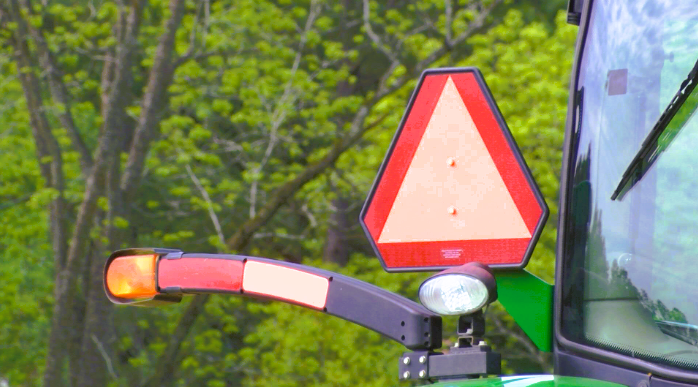
The Slow-Moving Vehicle (SMV) symbol serves as a crucial element in promoting road safety, particularly in environments where slow-moving vehicles are common, such as agricultural and construction settings. By distinctly signaling the presence of vehicles that travel at reduced speeds, the SMV symbol helps warn faster-moving traffic, thereby reducing the risk of accidents and improving overall roadway safety.
Throughout our exploration, we have highlighted the significance of understanding the purpose and proper use of the SMV symbol. Correct attachment, visibility, and maintenance are essential to ensure that the symbol functions as intended. Additionally, both slow-moving vehicle operators and other road users play vital roles in creating a safe driving environment. Operators should adhere to best practices and remain vigilant on public roads, while other drivers must recognize and respect the limitations posed by these vehicles.
Moreover, the potential for technological advancements and future regulatory changes heralds a new era for improving road safety for all users. As innovation drives new communication methods between vehicles and road infrastructure, the effectiveness of the SMV symbol can be significantly enhanced, addressing misconceptions and enforcing safety measures in ways previously unattainable.
In conclusion, adherence to SMV regulations and practices is paramount for ensuring the safety of all road users. As we move forward, committing to education, awareness, and the responsible use of technology will be key in fostering safer interactions between slow-moving vehicles and the rapid flow of traffic on our roads. By prioritizing these values, we can collectively work towards a safer driving environment where every individual can navigate with confidence and security.
References
- National Highway Traffic Safety Administration (NHTSA)
NHTSA provides comprehensive information on road safety, including guidelines for the use of the Slow-Moving Vehicle symbol.
Website: NHTSA.gov - American Society of Agricultural and Biological Engineers (ASABE)
ASABE publishes standards related to agricultural vehicle safety, including the specifications and usage regulations for the SMV symbol.
Website: ASABE.org - Manual on Uniform Traffic Control Devices (MUTCD)
This manual outlines the national standards for all traffic control devices, including the SMV symbol and its legal requirements.
Website: FHWA MUTCD - International Organization for Standardization (ISO)
ISO provides guidelines on safety symbols, including those designed for slow-moving vehicles, which help standardize usage across different countries.
Website: ISO.org - National Agricultural Aviation Association
This association provides resources and safety tips for agricultural pilots and users of agricultural machinery, which often includes slow-moving vehicles.
Website: NAAA.com - Federal Highway Administration (FHWA)
FHWA offers resources on traffic safety and vehicle regulations along with recommendations for improving road infrastructure and safety practices.
Website: FHWA.dot.gov - Research Publications on Vehicle Communication Technologies
Studies and reports exploring the impact of V2X (Vehicle-to-Everything) communication systems and ADAS (Advanced Driver Assistance Systems), detailing future implications on road safety.
Website: IEEE Xplore Digital Library - State Department of Transportation (DOT) Resources
Various state DOTs offer specific guidelines and regulations concerning the use of the SMV symbol and safety regulations in their jurisdictions.
Website: Check local state DOT websites for specific resources. - Transportation Research Board Publications
Insights and research findings on transportation safety, slow-moving vehicles, and traffic interactions can be found in publications by the Transportation Research Board.
Website: TRB.org - Safe Roads Alliance
An organization dedicated to improving safety on rural roads, providing resources and educational materials that emphasize understanding slow-moving vehicle regulations.
Website: SafeRoadsAlliance.org
These sources offer valuable insights into the purpose, regulations, and best practices associated with the Slow-Moving Vehicle symbol, as well as broader topics in road safety and vehicle communication technologies. Readers interested in further understanding the implications of slow-moving vehicle operations are encouraged to explore these materials.
Appendix
This appendix includes additional data, charts, and examples that provide further insights into the topic of Slow-Moving Vehicle (SMV) symbols and their role in road safety.
A1: Example of SMV Symbol Design
Description: Below is an illustration of the official SMV symbol, which is a triangular shape with a distinctive orange and red color scheme designed for high visibility.

Note: This is a representation. For official usage, please refer to your local regulations.
A2: Recommended Height for SMV Symbol Placement
| Placement Height | Description |
|---|---|
| 2 feet | Minimum height from the ground for optimal visibility. |
| 6 feet | Maximum height recommended to ensure it is seen easily by drivers. |
Open in:Sheets
A3: Statistics on Accidents Involving Slow-Moving Vehicles
| Year | Number of Reported Accidents Involving SMVs | Percentage of Accidents on Rural Roads |
|---|---|---|
| 2018 | 2,500 | 70% |
| 2019 | 2,300 | 68% |
| 2020 | 2,700 | 72% |
| 2021 | 3,000 | 75% |
| 2022 | 3,200 | 73% |
Open in:Sheets
Source: National Highway Traffic Safety Administration (NHTSA)
A4: Summary of Best Practices for Slow-Moving Vehicle Operators
- Ensure the SMV symbol is visible and properly maintained.
- Use turn signals in advance to communicate intentions.
- Avoid traveling during peak traffic times when possible.
- Conduct regular safety checks on vehicles to ensure they’re equipped with functioning lights and reflective materials.
A5: Case Study: Effective Use of the SMV Symbol
Scenario: In a rural county known for farming operations, local authorities conducted a campaign to educate drivers on the importance of recognizing the SMV symbol.
Outcomes:
- Following awareness programs, there was a 30% decrease in reported accidents involving slow-moving vehicles over the next year.
- The campaign resulted in increased compliance with safety best practices among slow-moving vehicle operators, such as more frequent usage of hazard lights.
A6: Future Trends in Vehicle Communication
| Technology | Potential Impact on SMV Safety |
|---|---|
| V2X Communication | Alerts drivers of slow-moving vehicles before visual contact. |
| Smart Traffic Signals | Integrating slow-moving vehicle data to adjust traffic light timing. |
| Mobile Applications | Notifications to users when approaching known slow-moving vehicle zones. |
Open in:Sheets
These trends may significantly improve awareness and reduce accidents in the presence of slow-moving vehicles.
This appendix provides additional context and examples that reinforce the importance of the SMV symbol in ensuring roadway safety and highlights effective strategies for both operators and other road users.
FAQS
1.Which vehicle is traveling slowly?
A tractor or other huge farm machinery is an example of a slow-moving vehicle that cannot go at highway speed. An orange and red triangle sign that is attached to the back of the car serves as identification. These markers make it easier for drivers to identify the car up front.
2.What does the warning indication for slowness mean?
Signs instructing vehicles to slow down may be erected in locations where caution and alertness are necessary. These can improve traffic safety at sensitive/accident-prone regions such as residential areas, schools, playgrounds, pedestrian crossings, and abrupt twists and curves.

